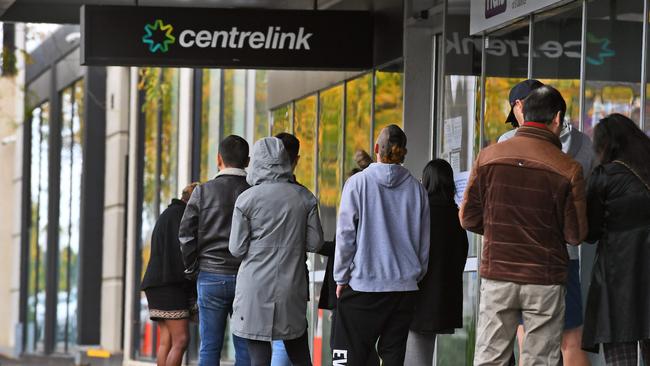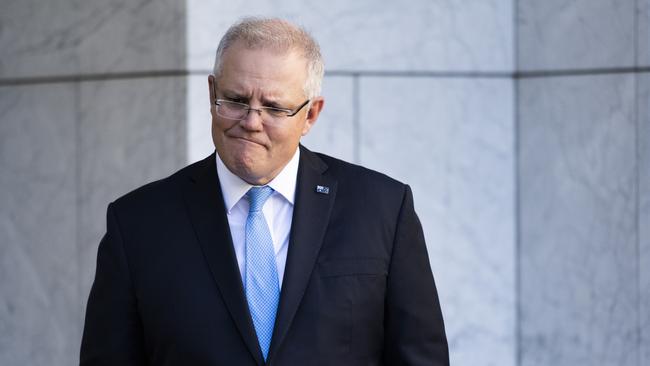Overhaul needed to save future generations
Taxpayers need to get the most out of the JobKeeper and it’s legacy must not be to endlessly prop up businesses that are no longer viable, writes Susie O’Brien
The $130 billion JobKeeper scheme must be made fairer and more affordable.
The Federal Government must keep the scheme going until September, but it should be overhauled so taxpayers are getting the most out of our investment.
JobKeeper was a useful instrument back in March, but we shouldn’t rely on its economic sugar hit for any longer than necessary.
The focus as we move forward out of lockdown is protecting those who lose their jobs, not endlessly propping up businesses that are no longer viable.
One analysis from the University of Melbourne suggests JobKeeper is costing about $130,000 per job it’s saving. That’s an extraordinary amount of money — especially given that some of these jobs won’t exist after the scheme ends.
The generous nature of the JobKeeper handout has led some employees to think they don’t have to work for the money.
Some employers are also taking advantage, making workers do additional shifts or keeping some of the payments.

They’re acting as if it’s their money, but the $1500 a fortnight paid to more than six million on the scheme is coming from taxpayers like you and me.
The government must also ensure JobKeeper is wound up by September.
As time goes on and restrictions ease, companies should pay their own wages, not taxpayers.
This government also has a responsibility to better target the scheme.
For a start, workers should not be receiving more than they normally earn.
An estimated 1.7 million JobKeeper recipients don’t usually earn $750 a week, and yet that’s what they’re being paid.
In some cases, it’s for doing as little as one hour a week.
It’s because the scheme was set up in haste, and had a blanket application that allowed it to be rolled out quickly.
We can’t afford this kind of generosity in the best of times, and especially not when we’re marching towards the worst recession since the 1930s.
The June review gives the government a chance to tweak the scheme’s application to ensure this is no longer the case.
The end of the scheme in September will also see many millions of people move directly on to unemployment benefits.
Grattan Institute data shows between 14 and 26 per cent of Australian workers — up to 3.4 million people — could be out of work.
This includes more than half of all workers in hospitality, along with others from the arts, education, training and retail sector. Younger workers, those on low incomes and women will be hit the hardest.

The institute’s analysis shows those on the lowest incomes will be worse off, with those earning more than $3000 a week half as likely as others to lose their jobs.
This is why another urgent item of business for the federal government is ensuring JobSeeker payments are much higher than the old Newstart payments.
About 1.6 million people are now on the dole, which doubled to $1100 a fortnight under JobSeeker compared to $490 a fortnight for a single adult on Newstart.
When I was at uni, we ran a campaign saying you couldn’t feed a dog on Austudy.
Well, you can’t feed a dog on Newstart, let alone a person.
Newstart was only ever designed to be a stop-gap rather than a long-term payment.
The post-Covid reality is that more people could be out of work for far longer than a few months.
While the current $1100 a fortnight JobSeeker payment may not be sustainable, people should be paid $200 more a week than the Newstart rate. Better targeting JobKeeper would free up funds for a long-term boost to JobSeeker.
JobKeeper is not perfect, but it’s given millions of people security when they needed it most.
It needs to be recalibrated to make it more measured, sustainable and fair.
People shouldn’t be getting a lot more money than they usually earn, and bosses shouldn’t be able to take advantage.
Already we know some employers have rorted the JobKeeper scheme, setting up fake companies to receive payments. Others have been slow to pass on payments to staff, or made unrealistic or unfair demands in terms of changes to duties or hours.
But we also need to wean our businesses off high levels of taxpayer funds, and support them to confront the new realities of the coronavirus era.
It’s not going to be easy. Many good businesses won’t survive, and many more jobs will be lost.
Treasurer Josh Frydenberg last week reminded Australians there’s “no money tree”.
He’s right. Whatever we spend now will be paid back by generations to come and we don’t want to entangle them in needless debt.
Susie O’Brien is a Herald Sun columnist

